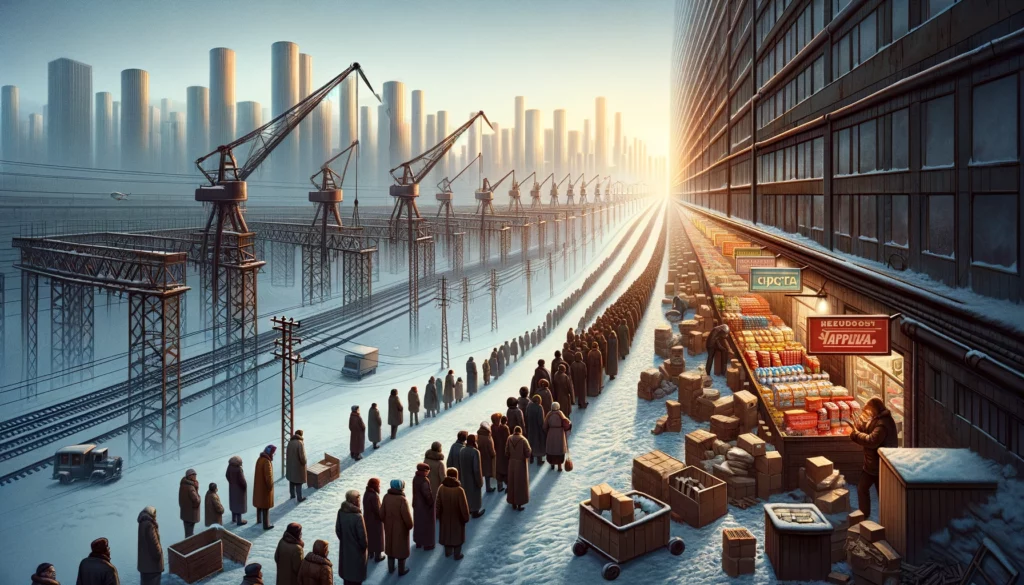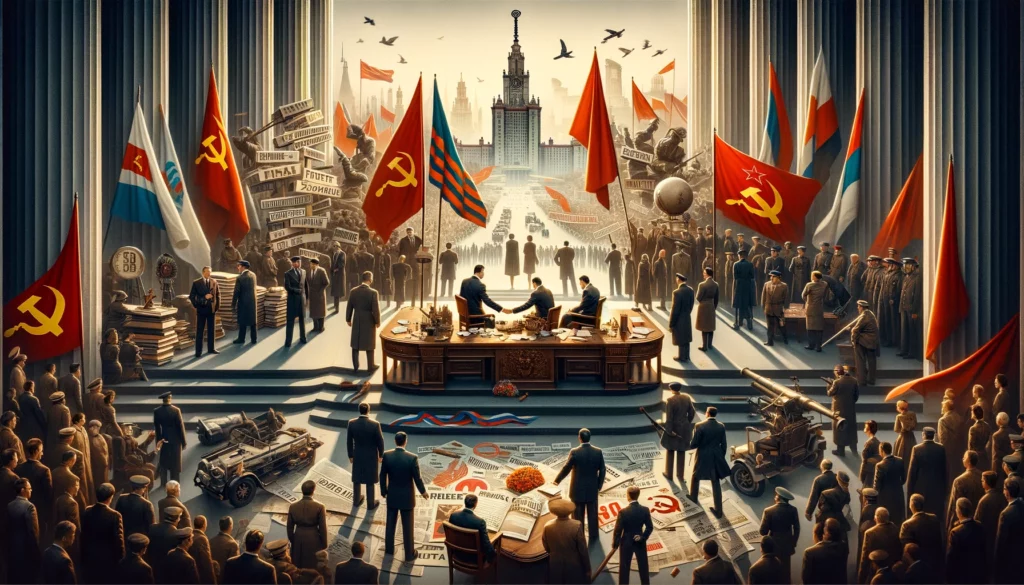Picture this: a global superpower, vast in land and rich in history, coming apart at the seams. It’s December 26, 1991, and the world watches in disbelief as the Soviet Union, a colossal entity on the world stage, ceases to exist. This moment marks not just the end of a country, but the conclusion of an era. The Soviet Union’s collapse was a pivotal point in modern history, reshaping the geopolitical landscape and setting the stage for a new world order. But what led to this astonishing downfall? Why did a superpower that once rivaled the United States in global influence disintegrate? Understanding this collapse offers us insights into political, economic, and social dynamics that are as relevant today as they were decades ago.
The Significance: Why Grasping the Fall Matters

Understanding the Soviet Union’s disintegration is crucial not only for historians but also for contemporary policymakers and the public. The collapse serves as a powerful lesson in the consequences of political rigidity, economic mismanagement, and social unrest. It reveals the fragility of authoritarian regimes and the perils of ignoring the needs and voices of the populace. For anyone keen on grasping the complexities of international relations and political science, this event provides a rich, real-world case study. Additionally, it helps explain current geopolitical tensions and the roots of post-Cold War global politics.
The Causes of the Collapse
- Economic Stagnation: The Soviet economy, shackled by its rigid centralized planning, struggled to keep pace with technological advancements and global economic trends. The government’s focus on heavy industry and arms race expenditures left consumer goods and services sectors underdeveloped. This imbalance led to a stagnant economy, lower standards of living, and a disillusioned citizenry.
- Political Stagnation and Reform Attempts: The Soviet political system was marked by a lack of transparency, limited political freedoms, and chronic bureaucratic inefficiency. In the 1980s, Mikhail Gorbachev introduced reforms such as Perestroika (restructuring) and Glasnost (openness) in an attempt to modernize the system. However, these reforms were too little, too late, and instead of revitalizing the system, they hastened its collapse by destabilizing the status quo.
- Nationalist Movements Within the Bloc: The Soviet Union was a mosaic of ethnic groups and nationalities, many of which harbored longstanding resentments towards Russian domination. As Moscow’s grip weakened, nationalist movements in republics like Ukraine, the Baltic states, and Georgia gained momentum, further fracturing the Union.
- International Pressures and the Arms Race: The Cold War placed immense strain on the Soviet economy. The arms race with the United States, particularly the Strategic Defense Initiative, forced the USSR to allocate vast resources to military spending, which was economically unsustainable in the long run.
- Social Change and Information Spread: Increased access to information and ideas, partly due to Gorbachev’s policies, exposed the Soviet population to alternatives to the prevailing system. This exposure, combined with growing unrest due to economic hardships, fueled public dissatisfaction.
- The Role of Foreign Policy: Soviet foreign policy, particularly in Afghanistan, drained resources and morale. The protracted war in Afghanistan (1979-1989) became the USSR’s version of the Vietnam War, deeply unpopular and costly, both financially and in terms of human life. This misadventure exacerbated domestic discontent and further strained an already overstretched economy.
- Technological and Agricultural Lag: The Soviet Union lagged behind the West in technology, particularly in computers and electronics. This gap hindered economic development and efficiency. Additionally, agricultural inefficiencies and failures led to food shortages, undermining the government’s promise of basic provisions for all citizens.
- Ideological Rigidity and Loss of Faith: Over the years, the ideological rigidity of the Communist Party eroded the faith of the people in the system. Corruption, lack of innovation, and the suppression of dissent created a disconnect between the government and the citizens, culminating in a loss of belief in the system’s effectiveness.
- Impact of Globalization and Comparative Economics: As global communication improved, Soviet citizens became more aware of the disparities between their standard of living and that of people in other countries, particularly in the West. This awareness contributed to public disillusionment with the Communist system.
- Gorbachev’s Leadership and Unintended Consequences: Mikhail Gorbachev’s leadership, while well-intentioned, had unintended consequences. His reforms inadvertently loosened the threads holding the Soviet tapestry together. While striving to improve the system, he ended up exposing its fundamental weaknesses.

Conclusion: Lessons from the Ashes
The fall of the Soviet Union offers enduring lessons on the dynamics of political power, economic management, and social cohesion. It reminds us of the consequences of ignoring the needs and aspirations of the populace, the dangers of economic and political rigidity, and the unpredictable outcomes of reform in authoritarian regimes. The Soviet Union’s collapse also highlights the significance of adaptability and transparency in governance.
As we reflect on this historic event, we must ask ourselves: How do we apply these lessons to contemporary global challenges? Are there parallels in today’s world that require us to heed the warnings from the past? The answers to these questions are crucial in ensuring that history’s lessons are not merely observed but actively integrated into our current and future policies.
What aspects of the Soviet Union’s collapse resonate most with your understanding of current global dynamics? Are there lessons from this historic event that you see as particularly relevant in today’s world? Share your thoughts and insights, joining the conversation about the impact and legacy of one of the most significant events in modern history.